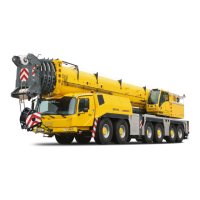SAFETY PRACTICES CD3340B/YB4411
2-2
Published 04/07/2015 Control # 569-00
.
Table 2-1
Personal Considerations
What to Do Why
Clothing
Check to see that you are suitably
clothed. For certain work it may be
necessary to wear flame or acid
resistant clothing.
The wrong clothes or carelessness in
dress can cause accidents and injury
Eye Protection
Wear eye protection when chiseling,
grinding, dazing, welding, painting, etc.
The smallest eye injury may cause loss
of vision.
Breathing Protection Wear respiratory protection.
Fumes, dust and paint spray are
unpleasant and harmful.
Hearing Protection Use ear protection if noise is excessive.
A loud noise may damage your hearing.
The greater the exposure, the worse the
damage.
Hand Protection
Use protective cream before work and
clean hands thoroughly after.
Prevents irritation and skin
contamination.
Foot Protection
Wear protective footwear with reinforced
toe caps and oil-resistant soles.
Protects feet from falling objects and to
avoid slipping.
Lifting
Make sure you are capable of lifting the
object. If in doubt, get help.
Avoids injury through incorrect handling
of components.
Table 2-2
Equipment Considerations
What to Do Why
Operators Cab
Before using the crane, be sure the
operators cab is secure.
Inhibits operator injury from parts of
operators body or clothing being caught
on objects when leaving the cab.
Lifting Equipment
Ensure that lifting equipment (chains,
brackets, hooks etc.) is checked before
use. If in doubt, select stronger
equipment.
Never stand under a suspended load.
Prevents serious injury or death due to
falling objects.
Prevents serious injury or death.
Compressed Air
Never use compressed air to blow dust,
filings, dirt, etc., from work area unless
the correct type of nozzle is used.
Look around before using an air hose.
Prevents serious injury to operator and/or
bystanders.
Bystanders may get grit into their eyes,
ears or skin.
Hand Tools
Never use the wrong tool for the job.
Always use the recommended tool.
Always keep tools clean and in good
working condition.
Many cuts, abrasions and injuries are
caused by defective or wrong tools.
These tools will reduce work, labor and
cost.
Reference Only
